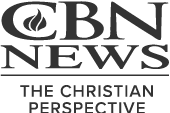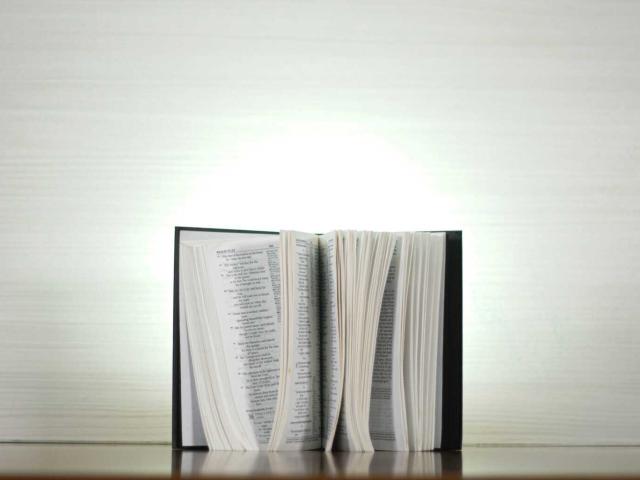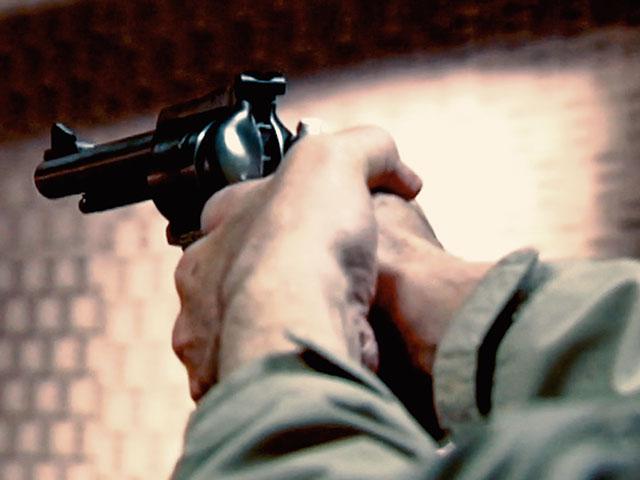Artificial Intelligence (AI) has been used on the famous Shroud of Turin to reveal the image of the man on the cloth that some believe is Jesus Christ.
According to those who say it is a religious artifact, the shroud is the actual piece of cloth that was wrapped around Jesus's body after his death on the cross. The resulting faint image left on the cloth was the result of an energy burst that happened at the time of Christ's resurrection.
According to Relevant Magazine, the AI-produced image from the Shroud reveals a man with long, presumably dark brown hair and a beard. His eyes are open and looking straight at the viewer. The man's neck is clearly defined, along with the top portion of his body which includes the shoulders.
The outlet noted, "While this is still simply a modern interpretation by a modern device, the results are stunning."
 In a social media post on Wednesday, The Case for Christ author Lee Strobel wrote: "According to Artificial Intelligence, this is what Jesus looked like if the Shroud of Turin is authentic."
In a social media post on Wednesday, The Case for Christ author Lee Strobel wrote: "According to Artificial Intelligence, this is what Jesus looked like if the Shroud of Turin is authentic."
Strobel also included the image in his X post.
According to Artificial Intelligence, this is what Jesus looked like if the Shroud of Turin is authentic. pic.twitter.com/CQaxwfv3Qn
— Lee Strobel (@LeeStrobel) September 27, 2023
Critics pounced on what the resulting AI image appears to be.
Author Clinton S. Thomas wrote, "The AI, depending on the access it had, was likely to reference several popular images of Jesus in addition to the Shroud before making a picture. The Shroud gives no specific indication of eye color, skin color, hair color, or clothing - this image includes all which indicates it is pulling from various images."
Filmmaker Christian Newlands replied, "Interesting. There's no confirmed historical record of Jesus having long hair though. The long hair descriptions stem from early depictions of Him from paintings of people in that time. In addition to His depiction, the description of Him in the book of Revelation is a description of Jesus resurrected, not living. No matter how accurate AI may like to be, it can't be that accurate if the information that gets processed are only depictions."
Others also pointed to the image's hair. In the Bible, there are no verses describing Jesus's hair. But there are verses in the Old Testament that describe how Jewish men were to take care of their hair, which was the law.
Based on these verses, Christianity.com noted in an article in 2019, that it is likely that Jesus had neatly trimmed black hair, long sideburns, and a beard.
Another user wrote, "Shroud history is fascinating. For instance, there is a reason why so many of the early icons of Christ look similar…. even though different artists painted them in different regions."
Several users also noted the image looked "too feminine" or "too soft" due to the fact that Jesus of Nazareth was a carpenter by trade, a man described in scriptures as determined and strong.
Scientific Evidence Sheds Light on Ancient Mystery About the Shroud of Turin
Since it first popped up on history's radar hundreds of years ago, the Shroud has captivated scientists, the public, and people of God worldwide. The linen is viewed by some as the burial Shroud of Jesus Christ and others as an incredibly complex medieval forgery.
The story of the piece of cloth is an age-old tale that threads together a centuries-old debate about a religious artifact that has survived fires and a series of perils across a journey through history.
In an interview with CBN News last year, Brian Hyland, an exhibit curator at the Museum of the Bible said, "There have been questions about the veracity of this image ever since its first documented appearance in the late 14th century."
In 1988, carbon testing dated the Shroud back to medieval times. But that test has repeatedly been called into question by various experts.
As CBN News reported in June 2022, a modern scientific procedure dated the fabric from the Shroud to roughly 2,000 years ago. That Italian study was the latest in a long series of scientific testing, including studies of pollen plucked from the Shroud with a scientific tape dispenser.
"The pollen samples that were gathered, they, a lot of them, are from plants that are native to not just the Middle East, but specifically the area around Judea, Palestine, and Syria and stay where it was in that time period," Hyland told CBN News.
"There's also pollen from the area around Constantinople. There's a lot of pollen from Europe," he said.
The pollen samples suggest a journey of thousands of miles from Jerusalem, through modern-day Turkey, France, and now Italy, where the artifact has been kept since the 16th Century.
The Holy Grail?
Some say the cloth housed in the Turin Cathedral is a vessel for human blood, and therefore may be nothing less than the Holy Grail, an object of some captivation that is said to have gone missing in 1204. The search for the grail or the cup that Jesus Christ used during The Last Supper was catapulted into pop culture with the release of the movie Indiana Jones and The Last Crusade in 1989.
British filmmaker David Rolfe said the Shroud itself could be the grail.
"You realize that the cloth is a vessel that's containing Christ's blood. I mean, there it is, and it is blood, and not only is it blood, it is type AB, which is the type that's consistent with Palestinian Jews," he said.
An Early Photograph by da Vinci?
Still others call this "bit of linen" a forgery by none other than Leonardo da Vinci. Clive Prince, who along with Lynn Picknett, wrote The Turin Shroud: How Leonardo da Vinci Fooled History, said, "It's a 500-year-old photograph by Leonardo da Vinci."
"And if that doesn't sound crazy enough, we're saying it's a 500-year-old photograph OF Leonardo da Vinci because he used his own face as the model, because that's the kind of thing he did," Prince added.
Picknett and Prince conducted their own experiments to try and replicate the image on the Shroud using a bust of the Roman emperor Marcus Aurelius. They also compared da Vinci's disputed Salvator Mundi painting to the image that's emblazoned on the Shroud.
But, like nearly every theory surrounding the Shroud, that, too, is disputed.
A 3-D Image
There is no paint on the cloth, and there are no brush strokes, and there's another mystery: the image is 3-D. Scientists using an image analyzer revealed decades ago that the lights and darks of the Shroud image translate into dimensional shapes.
In his fourth film on the Shroud, Who Can He Be? released in 2022, Rolfe's team used the latest technology to digitally extract data encoded in the fabric, revealing a three-dimensional model of a man.
"We can see what I believe to be the body of the crucified Jesus in front of us," he said.
Rolfe contends, "The only way that the image could've got onto that cloth is a miraculous one. A miracle that emanated from the body with unbelievable amounts of energy but within an infinitesimally short space of time."
The Christian Perspective
In an article for Focus on the Family's Daily Citizen published in June of 2022, Paul Batura said Christians should remain open-minded to the mystery surrounding the Shroud of Turin.
"It's true that Jesus reminds us that 'Blessed are those who have not seen, and have believed' (John 20:29). Yet, physical artifacts that elicit curiosity or conviction concerning Jesus Christ can be used to draw people into a broader discussion of salvation and His sacrificial death on the cross," Batura explained.
"Christians would be wise to remain open-minded regarding the mysterious, the mystical, and the miraculous. We may never know for sure whether the shroud is real or a fake, and perhaps that's how God intends," he noted. "But what we do know is that all that we can see is clearly not all that is, nor is it all that will be in the life to come."
***Please sign up for CBN Newsletters and download the CBN News app to ensure you keep receiving the latest news from a distinctly Christian perspective.***
Did you know?
God is everywhere—even in the news. That’s why we view every news story through the lens of faith. We are committed to delivering quality independent Christian journalism you can trust. But it takes a lot of hard work, time, and money to do what we do. Help us continue to be a voice for truth in the media by supporting CBN News for as little as $1.











 Support CBN News
Support CBN News







